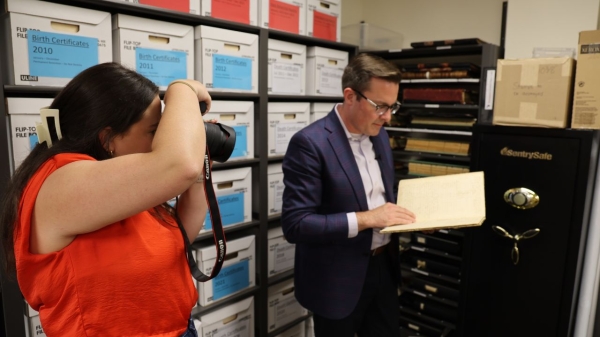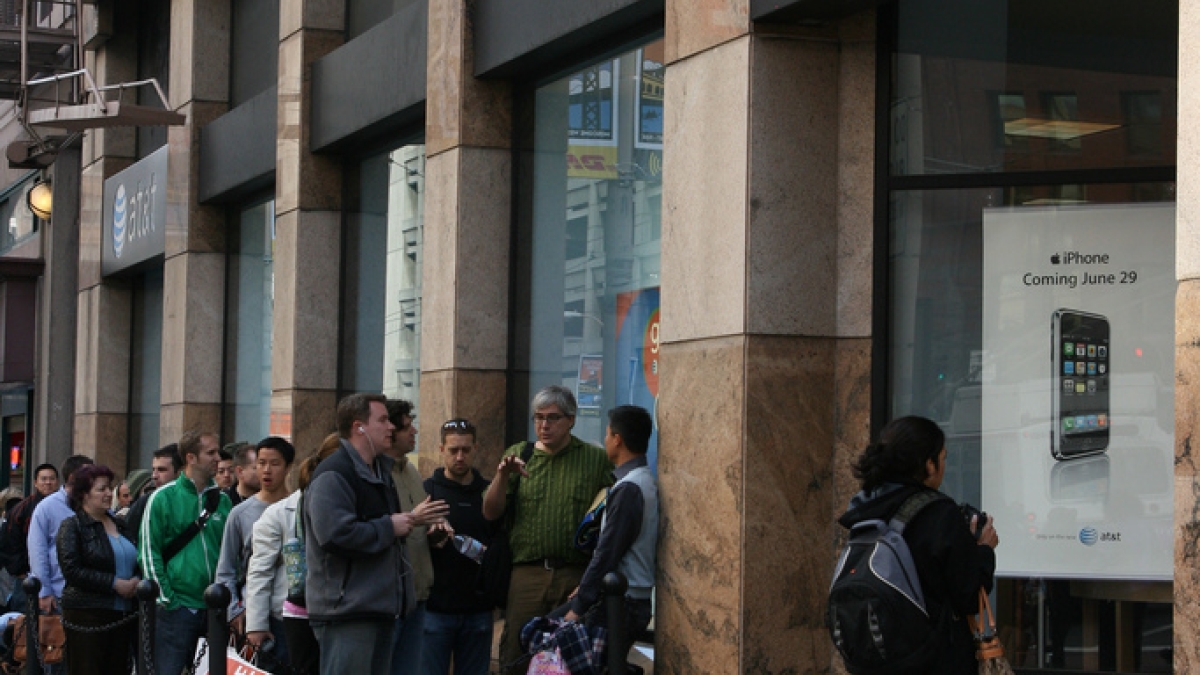An ASU business media professor says AT&T’s planned acquisition of Time Warner has the potential to change “the competitive landscape of content creation” if federal regulators approve the deal.
Mark Hass, professor of practice at the Walter Cronkite School of Journalism and Mass Communication and the W. P. Carey School of Business, specializing in strategic communications and marketing, provides insight on the deal that he says signals a significant shift in the media landscape.
The $85.4 billion merger would bring CNN, TNT, HBO and superhero franchises such as Batman and Superman under the AT&T umbrella, making them available on DirectTV and its streaming services.
Critics have argued the proposal could raise prices, limit choices and pose risks to consumer privacy.
The deal is expected to face scrutiny from regulators, who have the power to strike it down. Other media and tech companies could also emerge and usurp the potential merger.
Hass, with more than three decades of experience as a journalist, entrepreneur and strategic communications professional, helps sort these and other implications.
Question: Why is this deal happening now?
Answer: The media is being caught by digitization, and this is just another in a seriesComcast acquired NBC Universal in 2011. Verizon this year purchased Yahoo and AOL. of deals. All of the traditional telecom and wireless carriers are trying to own content.
As content moves to a small screen, they want to control content, not just access to the content. The Verizon’s and AT&T’s are generating a lot of cash, and they’re using it to get into the content business.
Q: Is this a big deal within the industry, and if so, why?
A: This is a big deal because AT&T is a big carrier. They had their last deal blocked when they tried to buy T-Mobile, and I also believe this will be the largest merger of the year based on value.
It’s big in that regard, but more importantly it’s going to change the nature of AT&T and make them one of the worlds, if not the world’s largest content provider.
They’re going to control both the creation and delivery of media to the small screen. I think it’s a much better powerful position to be in.
Q: How should the consumer view this merger?
A: If you’re an HBO or Showtime subscriber, it’s a big deal. If you’re an AT&T subscriber, it’s a big deal. That probably covers a lot of people. It changes the competitive landscape of content creation, assuming it is approved by the federal regulators.
Q: What are the potential benefits to the consumer?
A: It may make it easier for you to cut the cord with your current carrier if that’s what you want to do. Ironically, Time Warner Cable was spun out of a trend where people wanted to rely less on wire cable connection and more on a cordless connection — the idea that if you buy the content you want and delivered on any device you wanted, most likely your small screen rather than your TV, is a powerful trend that’s rolling over the cable industry, and the content creation industry. If you’re an AT&T subscriber, I can imagine a time when a channel like HBO and Showtime were just rolled into your subscription for a relatively small additional fee.
Q: What could be some potential drawbacks?
A: Something like this always raises the question of cost. If AT&T, and this is what the federal regulators will be looking at — is, will this hurt competition? If you’re not an AT&T, will it cost you more to subscribe to a cable channel? Or will you get second-rate content? It raises those kinds of anti-competitive questions because AT&T has a specific delivery platform that now has control of content. What they do with that content is another big question. Will they allow it to be deployed elsewhere? Will they charge differently if it is deployed elsewhere? This is unknown.
Q: How long will it be before we see the effects?
A: It’s still an open question whether or not the deal will be approved. I think it will receive a lot of regulatory scrutiny. AT&T already owns Direct TV, so there will be a period of scrutiny whether the deal will happen. But if it happens, then I think you’ll see the changes occur pretty quickly.
The trend to consume content on your mobile device instead of a wired device is very powerful. The growth is huge.
The bandwidth we’re consuming on video is big, and that’s only going to continue to get bigger. If the deal goes through, AT&T subscribers will see changes very quickly, making it advantageous to them to subscribe to other content channels that will be available to them through this deal. For people who are not subscribers, it’ll be longer before they see any changes.
Q: Any big-picture or long-range concerns?
A: I’m pretty calm about these types of mergers. I’m old enough to remember the furor over the AOL/Time Warner deal. There was so much concern that it would create an anti-competitive situation, and far from it.
It turned out to be a really bad deal for Time Warner because they got stuck with AOL when it was in decline, so it’s hard to predict how these things will go. The nature of digital media is to create dynamic opportunities for new business models. I suspect that over the next five years new and very powerful business models will emerge as well that will be competitive with the Comcasts, Verizons and AT&T’s of the world, and what they’re trying to do. Mid-term, there will be new, competitive, entrepreneurial models for receiving content on your mobile devices.
This merger opens up their bandwidth, and so now the structure has to be built up to match that demand. A lot of the current bandwidth is being consumed by third-party advertisers who are gathering data on people who are accessing content online without their knowledge. The privacy issues and who owns the data on those individuals will become a more prominent issue in the future and will emerge on a federal level.
Q: So this is a trend story?
A: That’s exactly right. I’m calm about it because it’s an inevitable movement. It’s not a good or bad thing; it just is.
Top photo by Jennifer Woodard Maderazo from San Francisco, USA (iPhone anticipation) CC BY 2.0 (http://creativecommons.org/licenses/by/2.0)], via Wikimedia Commons.
More Law, journalism and politics

Native Vote works to ensure the right to vote for Arizona's Native Americans
The Navajo Nation is in a remote area of northeastern Arizona, far away from the hustle of urban life. The 27,400-acre reservation is home to the Canyon de Chelly National Monument and…

New report documents Latinos’ critical roles in AI
According to a new report that traces the important role Latinos are playing in the growth of artificial intelligence technology across the country, Latinos are early adopters of AI.The 2024 Latino…

ASU's Carnegie-Knight News21 project examines the state of American democracy
In the latest project of Carnegie-Knight News21, a national reporting initiative and fellowship headquartered at Arizona State University’s Walter Cronkite School of Journalism and Mass Communication…
